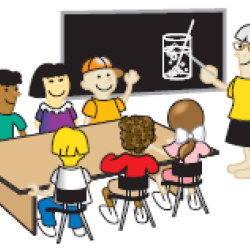Source Institutions
Source Institutions
Add to list Go to activity
Activity link broken? See if it's at the internet archive

In this activity (page 26 of the PDF), learners make observations, formulate hypotheses and design a controlled experiment, based on the reaction of carbon dioxide with calcium hydroxide. This is an introductory activity in "The Brain in Space: A Teacher's Guide with Activities for Neuroscience" but can be used to introduce any group of learners about the scientific method. This activity requires 3 days of 40-45 minutes of learning each day. The lesson guide includes background information, variations depending on age/level, and post-lab discussion suggestions.
- 45 to 60 minutes
- 1 to 7 days
- $5 - $10 per group of students
- Ages 8 - 18
- Activity, Experiment/Lab Activity, Lesson/Lesson Plan
- English
Quick Guide
Materials List (per group of students)
- 10 grams calcium hydroxide powder
- One liter of water
- Filter paper
- Filter funnel
- Large bottle (2 liters)
- Flasks or small bottles
- Plastic test tubes, 50 ml in volume
- Straws
- Goggles
- Foil
- Other materials depending on the experiments designed
Subjects
-
Earth and Space Science
-
Earth Structure
- Biosphere
-
Earth Structure
-
Life Sciences
- Cells
-
Human Body
- Respiration
-
Physical Sciences
-
Chemistry
- Chemical Reactions
- Solutions
-
States of Matter
- Gases
-
Chemistry
-
Mathematics
-
Data Analysis and Probability
- Data Analysis
- Data Collection
- Data Representation
-
Measurement
- Rate
-
Data Analysis and Probability
-
The Nature of Science
-
The Scientific Process
- About Inquiry
- Asking Questions
- Conducting Investigations
- Gathering Data
- Formulating Explanations
- Communicating Results
-
The Scientific Process
-
The Nature of Technology
- The Design Process
Audience
To use this activity, learners need to:
- see
- read
- touch
Learning styles supported:
- Involves teamwork and communication skills
- Involves hands-on or lab activities
Other
Includes alignment to state and/or national standards:
This resource is part of:
Access Rights:
- Free access
By:
- MacLeish, Marlene Y. ; McLean, Bernice R.
Rights:
- Public domain, NASA,
